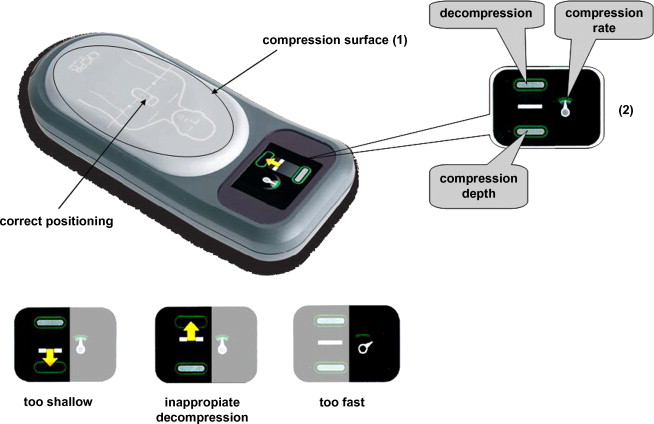During critical moments like cardiopulmonary resuscitation, aka CPR, compressing the chest in the right way matters a lot. After all, it is the ultimate way that help increase the patient’s survival rate. However, technologies like a “Chest Compression Feedback Device” are designed to help health professionals and rescuers in times like this. Even a layperson can use this innovative device, as it gives real-time data and helps make decisions as needed. Let us understand what does a chest compression feedback device monitor and how it can actually be a life-saving device for you and your loved ones.
Understanding a Chest Compression Feedback Device
A Chest Compression Feedback Device is essential, as it plays a vital role in cardiopulmonary resuscitation (CPR). Many say these devices have revolutionized the health sector, by offering real-time guidance and helping save when someone is having serious health issues. As whatever changes happening in the body, it helps to know about them directly so you can make changes as needed.
With advanced sensors, these chest compression feedback devices help maintain consistent and effective compressions, reduce fatigue, and help prevent injuries too. It comes in different forms, suiting all kinds of needs. However, they promise to give accurate and real-time data. To put it short, it helps improve CPR and increases the chances of survival of the patient.
What Does a Chest Compression Feedback Device Monitor?
By now, you have known its importance, however, it still leaves the question of what does a chest compression feedback device monitor unanswered. It plays an important role in helping one know about patient’s health and all. Not to mention, you can take it anywhere easily you want. Using advanced sensors and accelerometers, it helps track compression depth, rate, recoil, and hand position during chest compressions.
By giving feedback in real-time, the device helps by making sure one is doing the chest compressions in the correct way. In the monitoring process, you will know about the depth and rate of compressions, the recoil of the chest, and the correct placement of hands. In short, it can help increase their survival rate and save their lives.
Who Should Use a Chest Compression Feedback Device?
In many ways, a chest compression feedback device is a relatively valuable tool. It is not necessary that only doctors or healthcare providers should have it. If you know CPR methods, and by using these devices that offer real-time data, you can very easily help others.
By monitoring details like depth, rate, recoil, and hand position, the device helps ensure that you are compressing patients’ chests in the correct way. In addition, you don’t need to have technical experience as it is very simple to use.
What Benefits Does a Chest Compression Feedback Device Offer?

Image: https://www.sciencedirect.com/science/article/abs/pii/S0300957209005309
· During cardiopulmonary resuscitation (CPR), it helps make sure the chest compression quality is good by showing data in real time.
· It is an effective and reliable option, helping one maintain proper compression depth, rate, and recoil in difficult situations.
· With using these devices, patients’ survival rates can increase as you can take action immediately.
· Helps maintain optimal compression depth and rate and minimize the risk of injuries.
· Comparing to others, it is convenient and easy to use where you don’t need to have medical experience.
How To Use a Chest Compression Feedback Device in a Correct Way?
1. Read the guidelines and then put the Chest Compression Feedback Device on the patient’s chest. Make sure it is properly aligned and also your hands are placed where they should be.
2. Now, turn on the chest compression feedback device, as per the instructions written on the box.
3. Look carefully at what is showing on the screen, as the device starts giving you feedback during chest compressions. Also, listen to the sound that the device might make.
4. If the device shows bad compression quality, be ready to make immediate changes. You need to follow the recommended compression depth, at least 2 inches or 5 cm and rate 100-120 compressions per minute.
5. Depending on what result the device showed, you should take action immediately. You should get help from a doctor, for example, if the patient’s health seems to be getting serious.
Conclusion
We now know what does a chest compression feedback device monitor and how it is a way more essential tool in cardiopulmonary resuscitation, aka, CPR. Being small in size and light weighted, you can easily carry with you and use whenever you need. Including non-medical professionals, this chest device is important for everyone.
FAQs
What does a chest compression feedback device monitor?
A Chest Compression Feedback device monitors compression depth, rate, hand position, recoil, improving overall quality during CPR.
What is the target rate for chest compressions for children and adults?
It should be between 100 and 120 compressions/ minute for children and adults.








